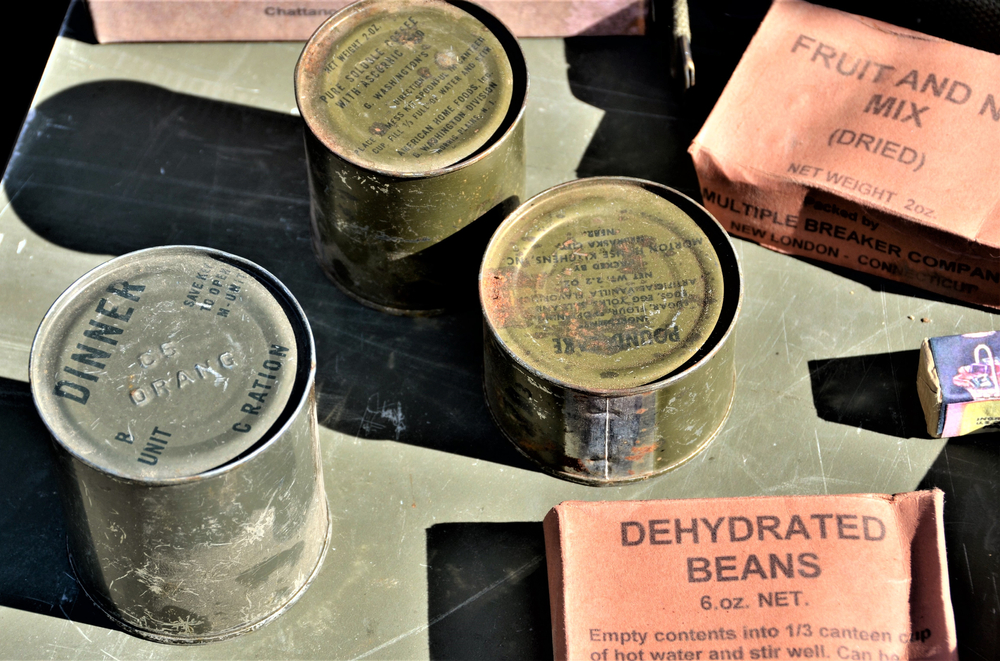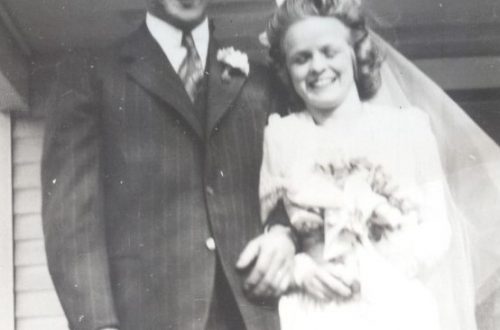
In Honor of Veterans’ Day: A “Tribute” to Army Food
From your email, please click on the title to view the photos and comment online. On the Website, you can read past blogs, search for recipes, and browse.
“G.I. beans and G.I. gravy; gee, I wish I was in the Navy,” goes a couple of verses of a marching cadence that our drill sergeant used during my basic training back in the late 1960s. As we knew it in the Army, the other branches of the service – especially the Navy – all had better food.
This Veteran’s Day weekend, I want to give a salute to the military. And since this is a blog about food, I would like to let you know that, among other sacrifices, a term of service is not spent eating the finest cuisine. After all, the military’s groceries are provided by the lowest-qualified bidder. And the average mess cook did not learn his or her craft from a Michelin chef.
The ABCs of Army rations
That said, the cooks usually did their best with what they had to work with, and the resulting quality was that of good diner food. A-rations were the top shelf, consisting of fresh, refrigerated, or frozen foods, usually prepared in kitchens and served in mess (dining) halls, like the large one at my posting at Fort Belvoir, Virginia. By contrast, the meals in our base-camp mess hall in Vietnam were generally very good and ample, but the ingredients were just not as consistently good. Even the dreaded WWII-era S.O.S. (s*** on a shingle), chipped beef and gravy on toast, by the 1970s had morphed into a sausage-gravy on toast or sometimes mashed potatoes that was decent and filling. That said, there were times we were served what we called mystery meat, a rather tasteless hunk of protein, probably pork, that was chewy and pretty tasteless.
Let’s remember that the people eating this food average about 20 years old, and with their overcharged metabolism, they tend to work up an appetite. Because we’ve decided as a country to send troops to other parts of the globe, the troops on deployment on foreign soil sometimes need to eat at field kitchens – if they’re lucky. Those field kitchens during my time didn’t typically have access to fresh ingredients. That meant we sometimes ate B-rations: canned or dehydrated food that did not require refrigeration.
Still, there were times when even the mess wasn’t available – if we were under attack or, in at least one case, when our water purifier was damaged in a typhoon. Then, we ate like the guys who were out in the bush: C-rations. Developed at the Quartermaster Subsistence and Development Laboratory in 1938, each packet contained a can of precooked food, coffee, chocolate candy, gum, and biscuits. Revised in 1958, the canned meals were improved – beef stew, spaghetti and meatballs, and franks and beans. If you were unlucky in the draw, you got the ham and lima beans, the worst of them all. The Army also added fruit cake, canned fruit cocktail, and canned peaches in the revised versions. Occasionally, our C-rats bore date stamps from the 1950s.
The chemistry of heating them up
To heat them for us, the canned meals were tossed in a large container of hot water. Out in the field, troopers were creative. The armored folks and chopper boys used the exhaust pipes or heaters. Soldiers on patrol used a chunk of C-4 explosive, which burned very hot, to heat the tins, but not too much because the enemy could smell your food. And everybody had to collect the cans because those left behind could be collected by the enemy to make grenade booby traps.
We came up with workarounds. Some troopers put condiments like hot sauce in their rucksacks. I didn’t smoke, so sometimes, I could trade the cigarettes for a better meal. This underground barter was rampant among the troops. In the base camp, we usually didn’t have to eat C-rats. Our chief NCO cut a deal with the 4th Engineers for an occasional tray of donuts. And I remember a couple cookouts with steaks, burgers, and beer. Sometimes, we could even trade the Long-Range Reconnaissance Patrol guys for some of their new freeze-dried rations, the early version of MREs (meals ready to eat). Newly developed at the time, they were good, but if you didn’t make them just right by adding very hot water, they were a little crunchy. Thankfully, the Army has moved on from the C-rats to MREs, and I’m told that the food in most cases has improved over the years.
But I don’t think my observations about Army food based on my experience 50 years ago have changed that much. In the end, we all longed for a real home-cooked meal. So, since we’re thinking of our service people, instead of the lame “thank you for your service” when you run into a person in uniform, how about asking if they’d like you to send them some real food?
Please click on the headline to view the blog on the website. You can log in and comment at the end of the blog to share your thoughts and start a discussion, or suggest a topic for Farmboy in the Kitchen.
If you’d like to share the blog, click on the Facebook icon or one of the others. Thanks!





3 Comments
Wayne Taylor
Vietnam — February 1969- Decdmber 1970
Hey Lynn, you took me back 50 years as well. Got to admit that your piece didn’t tease my saliva glands, but I do remember C-rats and C-4. My favorites were Franks ‘n Beans and Fruit Cocktail. And for smokes. if I got ’em, I’d trade Salems for the most appealing meals. And I’d also trade for my own favprote brand–Camels, or Humps, as I used to call them. I appreciate that Stevie B. shared your post. As for you, whom I haven’t seen in 25 years or so, “Welcome Back” and how’d you like some real food. Best, Wayne
Farmboy
Wayne, Great to hear from you. Thanks for the comments. We were in RVN about the same time. I was there from April to December 1970. Given your early departure, you weren’t by any chance part of the 4th Division? While you’re at it, why not subscriber. It’s free. Best. Lynn
Chuck Kennedy
I did Basic Training at Ft. Leonard Wood in Missouri in 1963. We occasionally ate C-rations with dates in the 40’s. It was a cold November when we were forced to eat our meals outside the mess hall, off of metal trays. You had to eat fast to eat warm. As I remeber the food was pretty good, like dider food.
Chuck